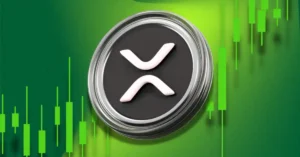Layer-2 Blockchains Host Most Ethereum Transactions: Messari
1 year ago CryptoExpert
Ascending to 61% of all transactions, Ethereum’s Layer-2 networks were home to a majority share of activity in the third quarter, according to Messari’s latest State of Ethereum report.
Kunal Goel, senior research analyst for Messari, wrote that the surge was spawned by the explosive launch of Base—which briefly overtook the number of transactions happening on Ethereum’s mainnet–along with the unexpected popularity of the Friend.tech social token platform.
Goel said he was actually caught off guard by the aforementioned combination. “The most impressive thing is Base’s quick growth and how just one app can turn things around for any blockchain,” he told Decrypt.
He explained that new chains “can suffer from a cold start problem,” but thankfully for Base, Friend.tech helped onboard a lot of users and funds. “Users need developers to make good apps, and developers need users to want to launch apps,” Goel said, adding, “it’s very good for Base that Friend.tech chose it for launch.”
The analyst remains cautious, however. “It is still a bear market, and interest and enthusiasm across the board is low.”
Incubated by Coinbase, Base has seen impressive growth since its launch in early August, which reports a total value locked (TVL) of $448 million, according to a Dune dashboard by 21.co. This firmly places it in the top four layer-2 solutions, behind Arbitrum, Optimism and zkSync Era.
Arbitrum continues to be the most utilized by Ethereum users, with 600,000 average daily transactions, offering a 200,000 margin from the main competitors mentioned by Messari: Base and Optimism. These two, wrote Goel, have “cannibalized” Arbitrum’s network activity, with transactions dropping 36% during the third quarter.
21.co’s Dune dashboard reveals an important lead for Arbitrum in terms of TVL, as well. Its $4.22 billion is nearly threefold that of Optimism, which lands in second, at $1.27 billion. That said, both have been flipping their market capitalizations of late, and according to Coingecko, the former leads with a $30 million margin, sitting currently at $1.067 billion.
As per Goel, the fact that Layer-2s are taking the lead in terms of transaction throughput is not surprising. He told Decrypt that “the longer-term view has always been that L2 transactions will overtake Ethereum’s,” adding, “it was clear during the bull market of 2020-21 that Ethereum mainnet’s block space alone wasn’t going to be enough.”
The view resonated with Eliezer Ndinga, head of research for 21.co. He told Decrypt that his company had predicted this to be the trend, since “blockchains are quite limited in scale.”
Ndinga explained that these scaling solutions are “analogous to how bandwidth pushed the boundaries of what’s possible on the Internet from the era of dial-up where web pages were taking minutes to load on a web browser.”
The analyst bullishly called these layer-2s “a force to be reckoned with,” especially as “reputable financial institutions” start to adopt the technology.
What Goel unveiled today has him bullish–as it should the Ethereum community at large. “The greater activity there is on L2s, the higher their market caps, the higher security they want from Ethereum, and higher demand for Ethereum’s data availability service,” he told Decrypt.
He also shared what “the biggest thing” to watch is: how much cheaper L2s can get after the Dencun upgrade, and “once they get cheaper,” how much more activity they will see.
“My long-term view is that all DEX trades should move to L2s as lower transaction fees help the most with high-velocity transactions,” he concluded.












